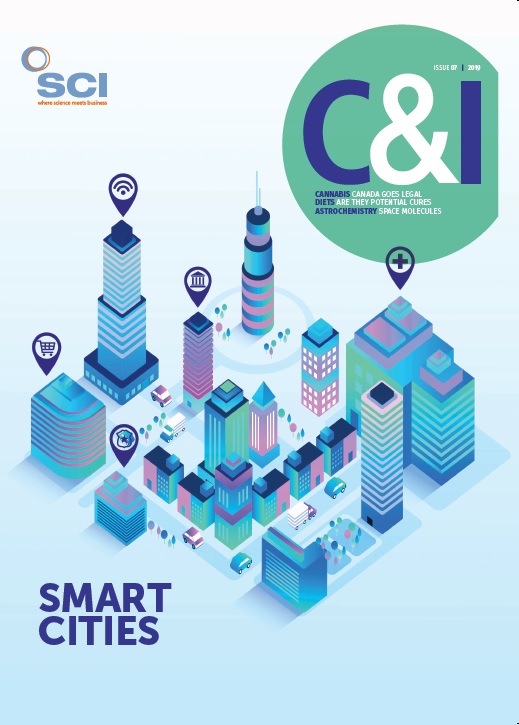Imagine Chemistry (IC) is speciality chemicals company Nouryon’s approach to research, development and innovation (RDI). Now in its third consecutive year, the corporate, previously Akzo Nobel Speciality Chemicals, works in collaboration with start-ups and university research departments to find solutions to its business and customer portfolio. In exchange for the best ideas, Nouryon offers a route to market and crucially, works with them as equal partners, sharing information to co-create new technology. Any start-up or university team that collaborates with Nouryon through Imagine Chemistry doesn’t give up its intellectual property (IP) rights and any future developments are subject to joint IP.
As in previous years, the company put out specific challenges that its business faces and invited potential partners to come up with solutions. For 2019, the challenges included sustainable chemistry, eg resource-efficient polymer technologies and green electrochemistry; new performance-boosting nanoparticles; sustainable bio-based surfactants; label-free chemistries, ie solutions that make chemistry less aggressive so there is no need for warning labels on the products; and sensors for the demanding chemical environments in chemical plants.
Some 162 ideas were submitted by teams from around the world, including for the first time a team from China. A jury of Nouryon business and R&D leaders selected 14 for a finals event at Nouryon’s research centre in Deventer, the Netherlands. Over two days the finalists got the opportunity to work with Nouryon’s senior managers in R&D, and marketing, as well as with the corporate’s IC partners – Unilever, Lux Research, Icos Capital, S/Park, Green Chemistry & Commerce Council, High-Tech Grunderfonds, and China Petroleum and Chemical Industry Federation. There was opportunity to discuss supply-chain issues, IP, and sustainability, and to test and develop ideas, and define a route to market.
Eight finalists left with an award. Renier Vree, Nouryon’s CFO explains: ‘We are looking for ideas that help us to grow as a company, and ideas that are implementable in the foreseeable future.’ The awards vary, depending on what stage of development the company is at and what it needs to do next. There are chemical support awards, support awards from the participating partners, research agreements, and for those closest to market, there is the possibility of a supply agreement or joint development awards (JDAs).
Canadian membrane technology start-up Ionomr took one of two JDAs on offer to take forward its stable and cheap membranes for water electrolysis and hydrogen production. This technology would give Nouryon access into a new and growing hydrogen market. The other JDA, which was two awards – one from Nouryon and another from Unilever – went to US biosurfactants company Sironnix Renewables.
The team has developed a bi-functional detergent molecule from plant oils, which serves as both surfactant and chelating agent, thus eliminating the need for co-formulated chemicals in laundry products. In addition, the biobased technology has a performance advantage over petrochemical-based surfactants: it works in hard water conditions, in up to 100x higher Ca2+ concentrations than the petrochemical-based surfactants. The team will work separately with Unilever and Nouryon scientists to fine tune their molecule to fit each company’s applications.
A supply agreement with Nouryon went to another Canadian start-up, Ingu Solutions, for its in-line golf ball-size and shape sensor. The sensor detects leaks, geometric defects and deposits that could threaten pipeline performance and safety. Already used in the gas and oil industry, the sensors have yet to prove their worth in the chemicals industry. However, the sensor requires zero downtime for a plant and no human intervention so the potential savings to the chemicals company, if it can be adapted, are huge.
Two UK companies came away with an award. A chemical support award went to Elaenor O’Doherty at the University of Sheffield with Entomics Biosystems for their development of fly larvae as an alternative fat source for biosurfactants, to replace palm and coconut oil and petrochemical sources. ‘How could we not choose it,’ explained Staffan Asplund, director RD&I surface chemistry at Nouryon, ‘It’s a completely new way of sourcing these fats, a key component for any surfactant and since there are issues with all the current sources, we are always looking out for new sources.’
The award will help the team do all the analysis of the fat compositions, necessary before the technology can be developed. And Cambridge Carbon Capture received a partner support award from Lux Research for its novel approach to capturing CO2 and converting it into valuable low-carbon materials. In a multistage process, MgCO3 is produced for use in the construction industry as a replacement for plaster boards and fire-proof insulation, as well as silica. The collaboration is expected to help the start-up identify alternative markets for its products and help it to build the business.
Nouryon is currently undertaking an independent review of Imagine Chemistry to decide how to take it to the next level.





